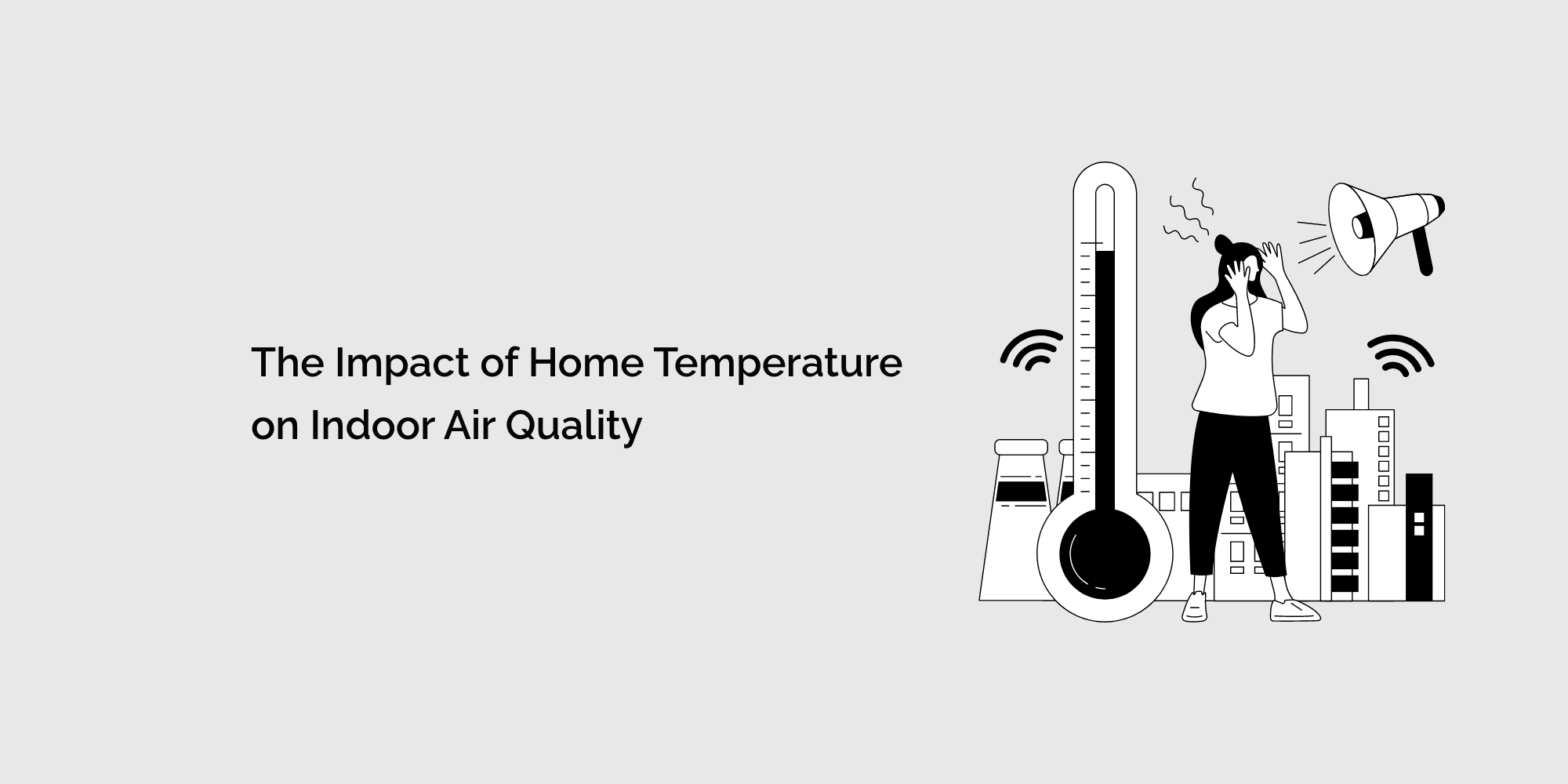Indoor air quality (IAQ) is a critical aspect of maintaining a healthy living environment. The air we breathe inside our homes can have a profound impact on our health and overall well-being. While many factors influence IAQ, one of the often overlooked yet significant aspects is the temperature of our homes.
In this blog, we will delve into the relationship between home temperature and indoor air quality, understanding how temperature affects the air we breathe, and the measures we can take to improve IAQ through proper temperature control.
Understanding Indoor Air Quality
Indoor air quality refers to the level of air pollution present inside a building, which can directly affect the health and comfort of its occupants. Sources of indoor air pollutants include dust, mold, pet dander, volatile organic compounds (VOCs), carbon monoxide, and nitrogen dioxide. Poor IAQ can lead to respiratory issues, allergies, headaches, fatigue, and even more severe health problems over time.
The Impact of Home Temperature on IAQ
Humidity Levels
Temperature is closely linked to humidity, as the ability of air to hold moisture increases with rising temperatures. High humidity levels can promote mold growth and the proliferation of dust mites, both of which are significant contributors to poor IAQ. On the other hand, low humidity levels can lead to dry air, causing respiratory discomfort and exacerbating allergies. Maintaining optimal humidity levels through proper temperature control is essential to prevent these issues.
Chemical Reactions
Temperature influences the rate of chemical reactions in the air, leading to the formation of different pollutants. For example, high temperatures can accelerate the production of ozone and secondary organic aerosols, which are harmful to respiratory health. Lower temperatures may slow down the breakdown of pollutants, leading to their accumulation in the indoor environment. Proper temperature management can help mitigate these chemical reactions and maintain healthier air quality indoors.
Ventilation and Air Circulation
Temperature affects our willingness to open windows and ventilate our homes. During extreme weather conditions, people tend to keep windows closed and rely on air conditioning or heating systems, limiting fresh air intake. Inadequate ventilation can trap indoor pollutants, leading to a decrease in indoor air quality. Finding a balance between comfortable temperatures and proper ventilation is crucial for improving IAQ.
Optimal Temperature Ranges for Indoor Air Quality
Winter Season
During the winter, maintaining an appropriate temperature is crucial for both comfort and IAQ. The American Society of Heating, Refrigerating, and Air-Conditioning Engineers (ASHRAE) recommends a temperature range of 68°F to 72°F (20°C to 22°C) for occupied spaces during the heating season. This range balances comfort and energy efficiency while reducing the risk of condensation and mold growth.
Summer Season
In the summer, keeping indoor temperatures in check is essential to avoid heat-related health issues. ASHRAE suggests a temperature range of 73°F to 79°F (23°C to 26°C) for occupied spaces during the cooling season. Adequate air conditioning helps maintain humidity levels and prevents the buildup of allergens, dust, and mold.
Tips for Improving IAQ through Temperature Control
Use Programmable Thermostats
Invest in a programmable thermostat to regulate indoor temperatures efficiently. These devices allow you to set different temperatures for different times of the day, optimizing energy consumption and ensuring comfort.
Regular HVAC Maintenance
Schedule regular maintenance for your heating, ventilation, and air conditioning (HVAC) systems. Clean filters and well-maintained HVAC units ensure better air circulation and reduce the circulation of pollutants.
Ventilate Smartly
During moderate weather, open windows and allow fresh air to circulate indoors. Use window screens to prevent pests and install air purifiers to remove outdoor pollutants.
Humidity Control
Invest in a humidifier or dehumidifier, depending on your specific needs, to keep humidity levels within the recommended range. This can help control mold growth and reduce airborne allergens.
Opt for Eco-Friendly Cooling
If possible, use natural cooling methods like cross-ventilation or ceiling fans to reduce the dependence on air conditioning systems, which can contribute to energy consumption and greenhouse gas emissions.
Conclusion
Maintaining a comfortable and healthy living space requires paying attention to indoor air quality and temperature control. The temperature of our homes directly impacts the air we breathe, influencing humidity levels, chemical reactions, and ventilation.
By understanding the relationship between home temperature and IAQ, and adopting appropriate measures, we can create a safer and healthier indoor environment for ourselves and our loved ones. Taking the time to optimize temperature settings and implement smart ventilation strategies will undoubtedly lead to better overall well-being and a happier living environment.








